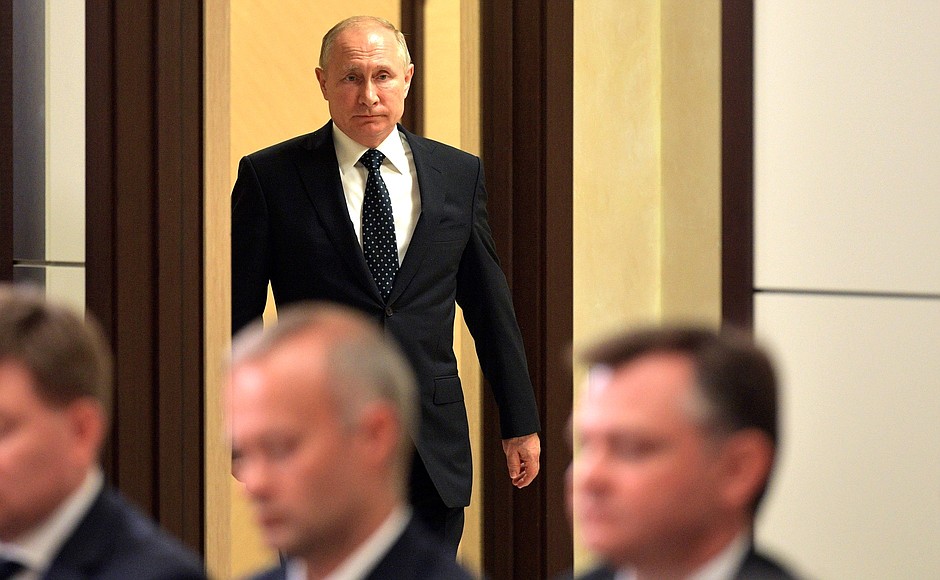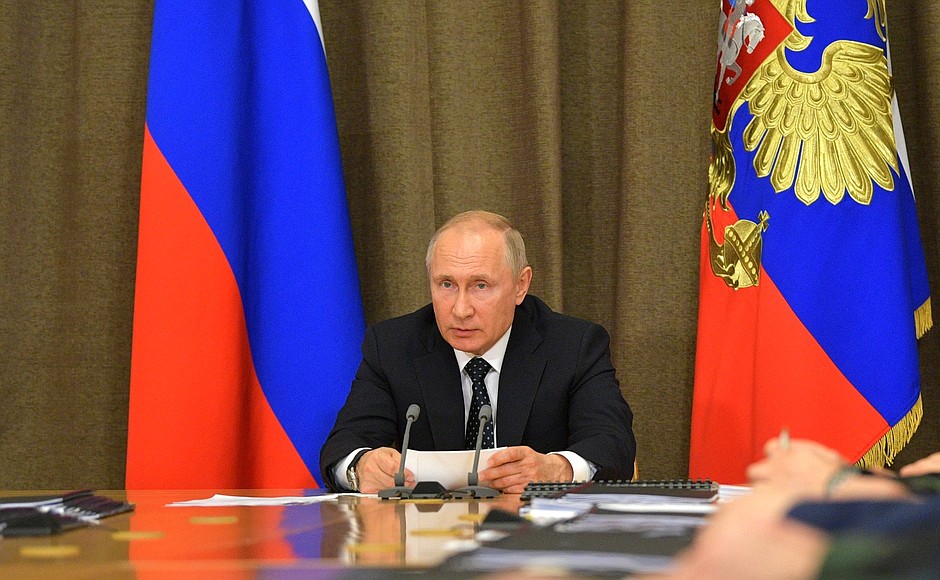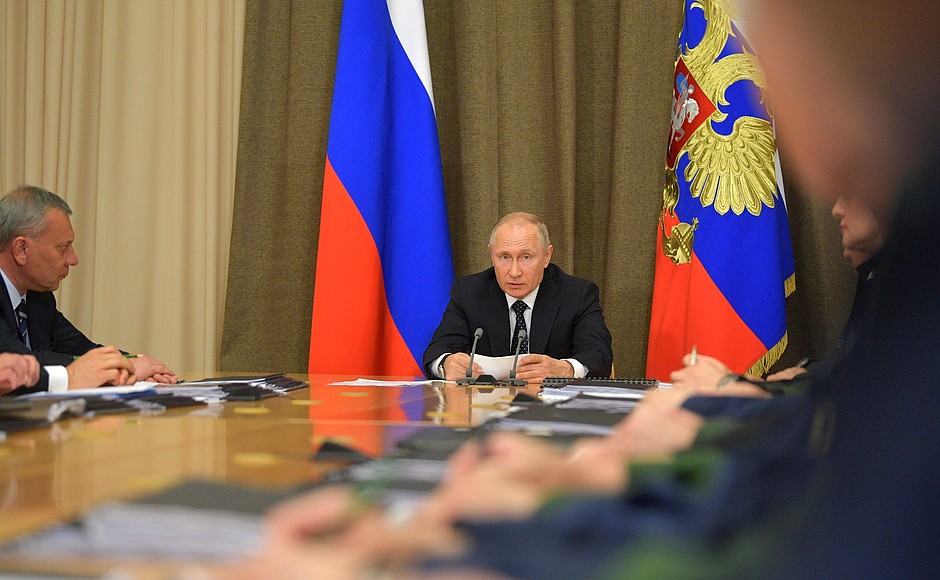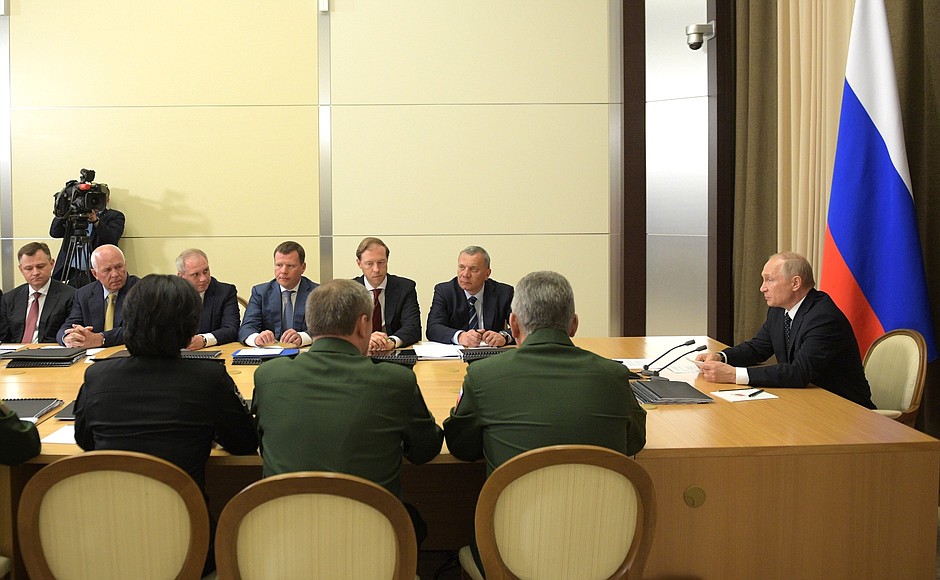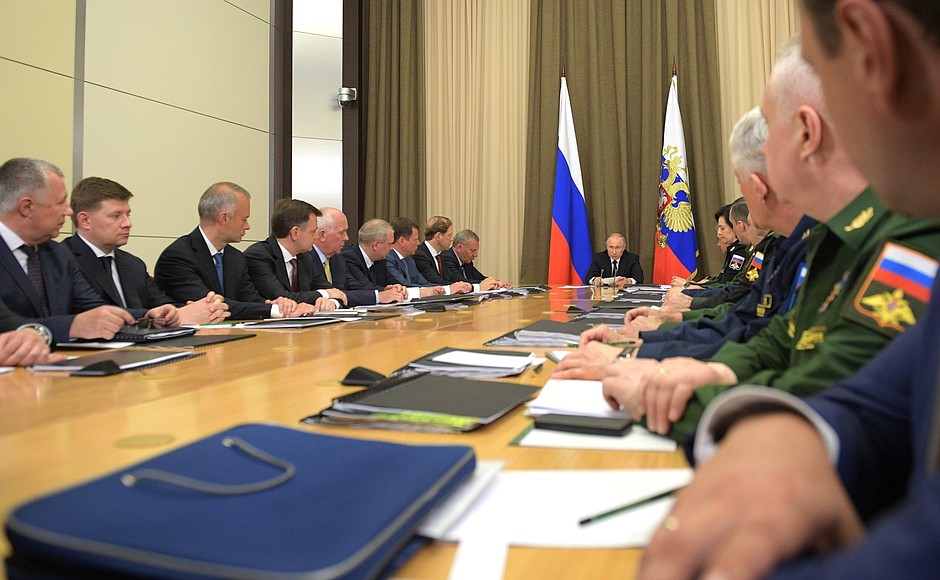President of Russia Vladimir Putin: Good afternoon, colleagues.
At our second meeting, we will review issues concerning the aviation component of the Aerospace Forces, discuss the main trends in the development of combat aviation equipment with modern warfare technology, and exchange views on the development of advanced aircraft, including drones.
Up front, I would like to note that over a thousand new and upgraded planes and helicopters were sent to the troops in 2013–2018 alone. As a result, 65 percent of the air fleet consists of modern aircraft. In all, the Air Force has over 3,000 aircraft. Most of them were multi-purpose combat systems for long-range, operational-tactical and army aviation. The combat potential of the equipment was demonstrated during the anti-terrorist operation in Syria. For example, Su-24M tactical bombers with the new guidance and navigation system used both ordinary bombs and precision weapons. As a result, the use of air weapons was reduced by several times.
Our task is to continue to develop combat aviation and strictly fulfil our plans: from deliveries of the latest generations of air equipment and arms to the training of pilots.
Colleagues, today I would like to draw your attention to several issues.
First, we emphasised the development and production of modern aircraft that will determine the combat potential of Russian military aviation for the next few decades. The Su-35C and Su-57 multipurpose fighters are in the final stage of testing. They have unique characteristics and are the best in the world. We need to fully reequip three Aerospace Force air regiments with the Su-57 fifth generation advanced air system by 2028.
Yesterday the Minister and I talked about this at the testing grounds. The armaments programme until 2027 provides for the purchase of 16 aircraft of this type. We analysed the situation yesterday in the context of the minister’s report. As a result of working on our agreement with the industry, the involved companies reduced the cost of the aircraft and arms by almost 20 percent, and we received an opportunity to buy many more combat systems of this class, virtually all of them are of the new generation. We agreed that we would purchase 76 aircraft of this type without an increase in costs during the same period. I must say that on such a scale, it is not even the scale that matters, but the fact that we have never done anything like this on a new platform in the past 40 years. I hope the adjusted plans will be carried out and that a contract for a packaged supply of 76 fighters with modern weapons and supported by the upgraded ground infrastructure will be signed soon.
The modernised strategic bomber Tu-160M, manufactured at the Gorbunov Kazan Aviation Plant, carried out its first flight in February last year. Today I ask you to report how design and development activities are proceeding, as well as the serial production of future planes and helicopters, and drones.
Second, by means of effective modernisation we must more actively increase the combat potential of the military planes and helicopters that we have at our disposal. For example, the power of the MiG-31 fighter-interceptor has grown considerably and it has become the basis for the advanced Kh-47M2 Kinzhal [Dagger] complex equipped with a hypersonic air-launched ballistic missile.
It is necessary to consistently upgrade the Tu-95 and Tu-160 strategic missile carriers and Tu-22M long-range bombers. All of them must be able to carry both advanced cruise missiles and other powerful weapons.
To continue, the army helicopter fleet must be quickly retrofitted with modern onboard defence systems with improved features and equipped with advanced weapons of greater range, and by 2028 we must supply troops with 100 upgraded Mi-28HM assault helicopters.
Third, the use of Russian aircraft in combat in Syria revealed some shortcomings in the technical condition of planes and helicopters, as well as in the weapons used. I would like to draw your attention to something you are already well aware of, which is that this would have been impossible to discover during testing. Production facilities are working diligently to eliminate shortcomings. We saw this when we visited the Kazan Aviation Plant and the 929th State Flight Test Centre of the Ministry of Defence in Akhtubinsk.
In addition, we were shown modern and prospective combat planes and helicopters, and drones. I would like to stress that all measures to prepare for the serial production of this equipment met the target dates. I would like you to operate just as methodically going forward.
Let us begin our work.
<…>
